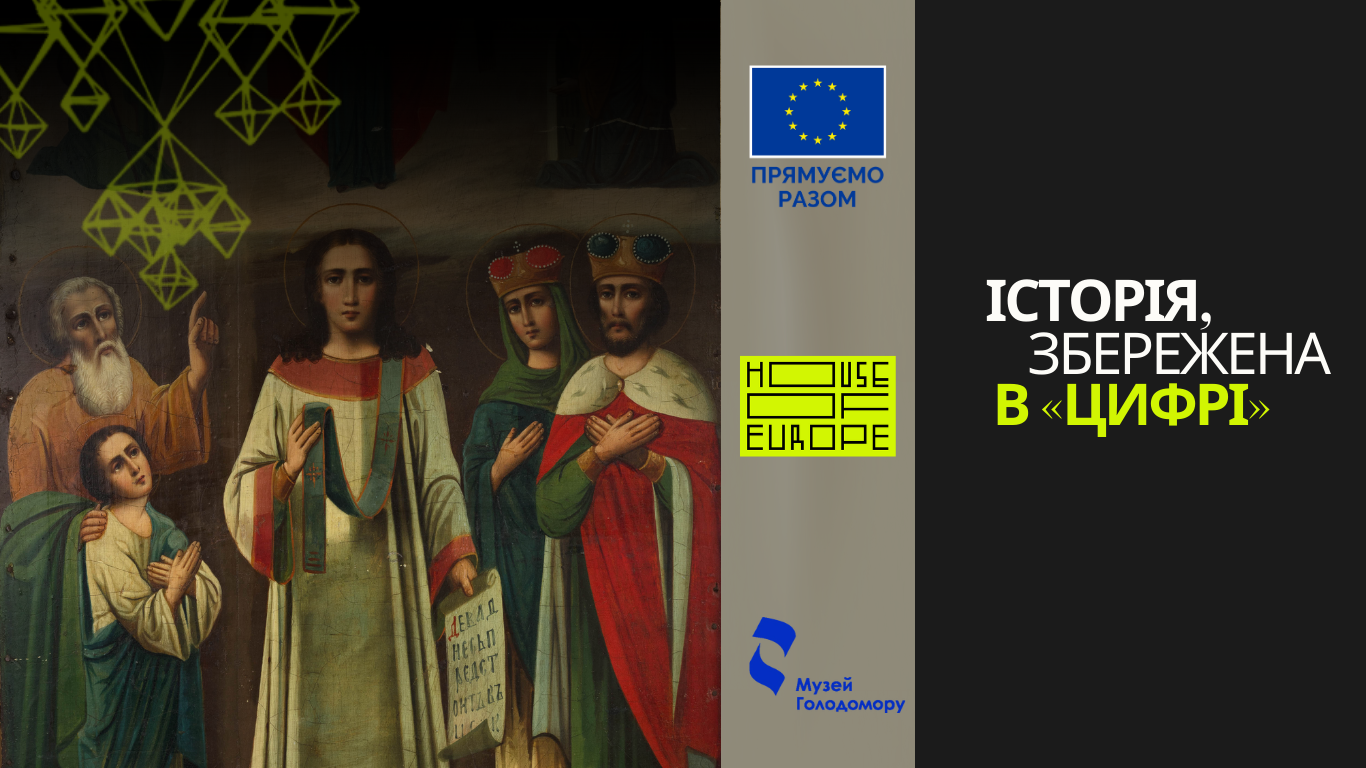As part of the History Preserved in Digital Format project, 462 items and 167 audio cassettes digitised.
Dear friends, we are pleased to announce the successful completion of the “History Preserved in Digital Format” project, implemented with the support of the House of Europe grant programme. Today, we would like to summarise the results and thank everyone who participated in this project.
Our task was to digitise items from the museum’s collection, including works of fine art (graphics, paintings), posters, clothing, tablecloths, towels, and blankets. Overall, we managed to preserve 462 items in digital format as part of the project.
Primarily, these are works by prominent Ukrainian and foreign artists and engravers who reflected on the Holodomor theme: Volodymyr Kutkin, Ivan Novobranets, Sabatino Scia, Mykola Bondarenko, and others.
There are also antique embroidered shirts and towels that served as means of exchange and salvation during the Holodomor.
The digitised items also include icons, which are symbols of preserved memory of dignity and freedom. One of the digitised images is the icon of Our Lady of Kazan, which belonged to the Kryvonis family, who resisted the Soviet regime.
Another significant part of the project was the digitisation of 167 audio cassettes containing 373 Holodomor eyewitness accounts. These voices, recorded over 20 years ago, are currently preserved securely so that future generations can hear the truth about the Holodomor.
Additionally, as part of the project, equipment was procured, including network storage and hard drives to ensure its operation, as well as other devices necessary for the secure and long-term storage of materials digitised under the project and Holodomor eyewitness accounts, which the museum continuously records and stores.
Subsequently, these materials will be made accessible to the general public: they will be posted on the website of the Museum Register of Ukraine, and audio recordings of the testimonies will be posted on the museum’s official resources.
By implementing the History Preserved in Digital Format project, we have accomplished a crucial mission: preserving cultural heritage. Valuable exhibits now have digital copies, ensuring their long-term preservation in wartime conditions and constant accessibility for researchers and visitors.
We thank the House of Europe for its support in making this project possible. We are proud to have made a significant contribution to preserving our national memory and conveying the truth about the Holodomor. Each digitised exhibit is not just an object, but a voice from the past talking to us. This project is not just about digitisation. It involves honouring the past, caring for the future, and safeguarding the truth. We should keep in mind that history is what unites us and makes us a nation.
The History Preserved in Digital Format project is supported by the European Union under the House of Europe programme.
